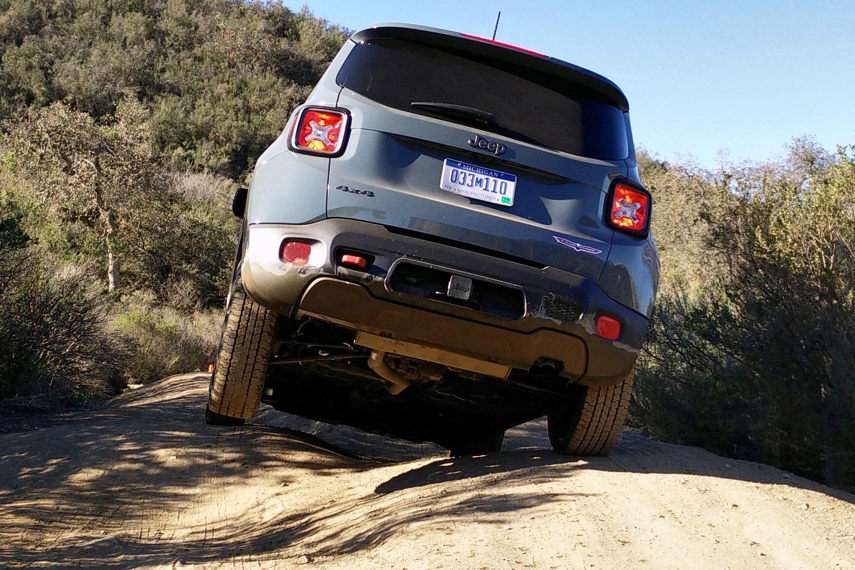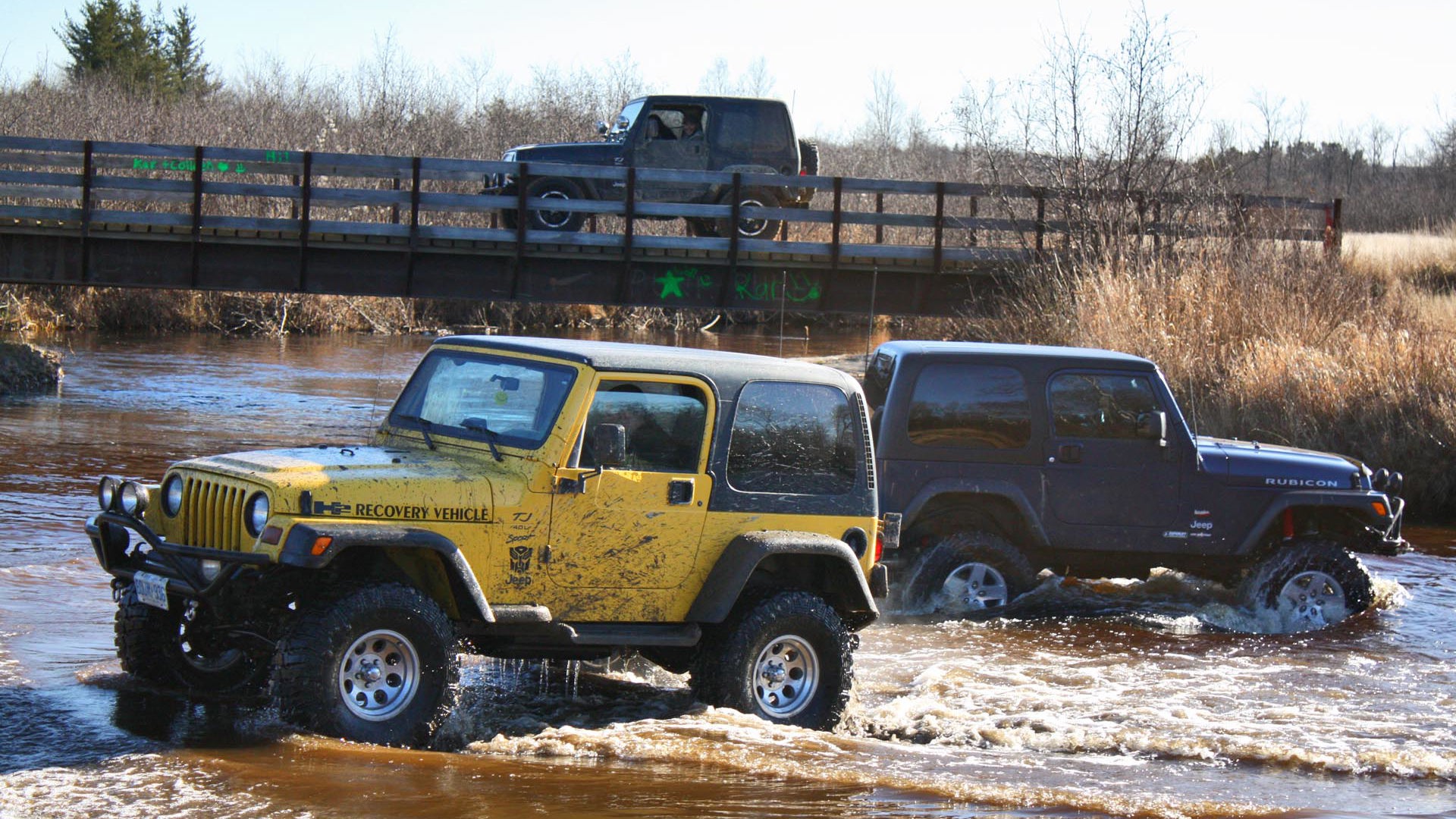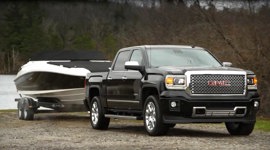Used to be that a 4x4 was used primarily as an off-road vehicle capable of slinging slop, climbing steep things, and inching its way over terrain that’d bust your ankle if you tried to walk over it.
Today, most SUVs are driven by soccer moms and ladies with purse-dogs, and many won’t see conditions more severe than a snowy highway, slippery driveway, or dirty construction zone.
Shame!
Most automakers admit that the majority of folks buying their SUV models won’t hit the dirt with their new ride at all, and that the majority of those who do partake in off-road activities only do so once the machine is several years old.
But you’re not one for falling in line with the numbers, and you’re going to take your new 4x4 into the woods to explore new places. So, why not join thousands of adventure-seekers and take to the trails on the weekend? It's fun, relatively safe, and it helps foster that bond between man and machine while returning your ride to its ancestral environment.
Of course, there's just one problem: you may have no idea what to do, what to bring, or what your ride can tackle. You're not alone – but thankfully, a bit of preparedness goes a long way towards successful off-road adventures.
First, get acquainted with the owner’s manual and familiarize yourself with your vehicle’s various systems. If you’ve got features like Downhill Assist Control (DAC), a differential lock, or Hill Start Assist, now’s the time to learn about them in detail. Your owner’s manual also outlines a variety of limits you shouldn’t exceed, often relating to climbing things and fording through deep water.
The gist? The first place to start in your pursuit of successful off-road adventures with your new ride is in your owner’s manual.

Next, you’ll need to determine what type of four-wheel-drive system is working beneath your ride. Some are totally automatic, while others require drivers to manually select from one of several 'modes'. Find out how to switch between two-wheel drive, four-wheel drive high (4-Hi) and four-wheel drive low (4-Lo) if applicable.
Note any limitations on speed or terrain in these various modes. If you’re running an ‘all-wheel drive’ system, you can skip this part. If you’re in a ride with 4WD low-range capability, remember not to engage it unless you’re driving very slowly and on loose surfaces, unless you want to be on a first-name basis with your mechanic.
Find out how to hook a tow-rope or chain to your vehicle, too. If you manage to wind up stuck, a little tug from another machine is often all you’ll need to get free. Leave the tow-rope in your ride, along with a shovel and some work gloves, just in case.
Ready to hit the dirt? Here are some basic tips to keep in mind. They even rhyme, so they’re easy to remember.
When the road ends, be sure to bring friends!
Off-roading alone is bad news. If you wind up hurt, stuck or lost, it’s best to have a friend or two along with a second capable vehicle for towing, or a ride out of the bush if you suffer a breakdown or blow a tire. Don’t go off-roading alone, especially at night, while you’re learning the ropes.

Water on the trail? Let common sense prevail.
Deep water can hide serious obstacles, ruts, and other nasty hazards. It can also destroy your vehicle’s engine. Inevitably, even a shallow stream can conceal a deep hole, which could swallow your ride.
Of course, most SUVs are engineered with some degree of water fording ability. Regardless, do NOT travel through water if you aren’t sure of its depth, or what’s beneath it. Measure with a stick if needed, or ask someone familiar with the trail and water crossing in question.
Have you seen videos of water crossings gone wrong on YouTube? Watch a few. The takeaway is that flowing water is much heavier and stronger than your SUV, so don’t mess around and get cocky, or you’ll get very, very wet. And wind up on YouTube.
Once you decide to enter the water, do it slowly and maintain a slow and steady speed. If you feel you’ll exceed the depth originally anticipated back out the way you came and find another way around.
When in doubt, get out and scout
Assuming your vehicle can tackle a questionable stretch of terrain is a good way to get stuck. Not sure how challenging an unfamiliar bit of trail is? Take a walk to check things out first. If your intended path looks too dangerous, deep, or rocky, find another one. Be especially aware of sharp-edged rocks, which can puncture a tire with ease.

Hitting an incline? Go in a straight line.
Don’t attempt to climb or descend a steep and slippery incline on any sort of angle. Heading straight up or straight down maximizes your vehicle’s stability, keeps it from wanting to tip to either side, and minimizes the effects of instability if you need to brake or accelerate while on the incline. Braking or steering on a steep grade, while on an angle, can cause your ride to skid violently or even tip over. If you have a hill-start assist or hill descent control system, now’s the time to use it.
Note that most SUV models can climb and descend surprisingly steep hills with confidence, providing you’re pointed straight to the top, or bottom. Use low-range as needed for extra crawling power on steep grades, and maintain steady and smooth throttle application when climbing, until you’re over the apex.
Use 4x4 as needed, when traction’s depleted
If you don’t have an automatic AWD system, you may be unsure when to select two- or four-wheel drive, or when to engage the low-range gearing, if equipped. Mark Nelson, Chrysler’s senior manager of Jeep Vehicle Synthesis, offers some advice.
“In general, low-range should be used when tackling steep grades so the gearing advantage can be utilized. A good rule of thumb is to not engage four-wheel drive, either high or low, until you need it. Once in need of 4WD, use ‘Hi’ until the terrain dictates”.
Remember, that 4WD ‘Lo’ setting can only be used at crawling speeds, so switch back to ‘Hi’ when you’re finished with it. The gist? Use your ride’s controls to engage additional traction in response to a need, not pre-emptively. Start in two-wheel drive, or four-wheel drive (Hi) and add differential lock (if available) and low-range from there. If you’re challenged by some extra-rough or extra-slippery terrain, you want to have options available.

Encountering ruts? Stay on top of the cuts!
Get your tires into some ruts, and you’ll lose your ability to steer, while running the risk of getting seriously stuck or hung up. The latter occurs when the belly of your ride sits on top of the ground, with the tires hanging below. When you’re hung up, there’s minimal weight on your tires, and you’ve got minimal traction.
If travelling in the same direction as the ruts, keep your tires riding the high ground on either side of them. At the very least, try and keep at least two tires out of the ruts at all times. If you’re travelling across some ruts, you’re typically best to tackle them diagonally – one wheel at a time. Go slowly and be very gentle with the controls.
Obstacle ahead? Hit it with the treads!
Never assume you’ll be able to clear an obstacle you have to drive over. If you can’t get around that tree stump or rock that wants to puncture your oil pan, you’re generally best to hit it with the tires.
Have a friend spot you, after checking for clearance. Line one side of your vehicle up with the obstacle, and drive over it very slowly, one tire at a time. If things look bad on second inspection, simply reverse straight off, the way you came.
Challenged in the dirt? Let the machine do the work.
SelecTerrain. Crawl Control. Downhill Assist. Terrain Response. A-TRAC. Various automakers have various electronic assist systems on offer, designed to enhance driver confidence and reduce stress levels when travelling off-road. It’s important you learn to use these systems, as they could save your butt. Learn how to engage each one, when to engage it, and then practice sitting back, relaxing, and letting the machine do the work for you. Be gentle with the controls, and sit back while the machine slogs, climbs or crawls along. Slow and steady works best in most off-road situations, and drivers that get impatient or rush tend to make mistakes.









